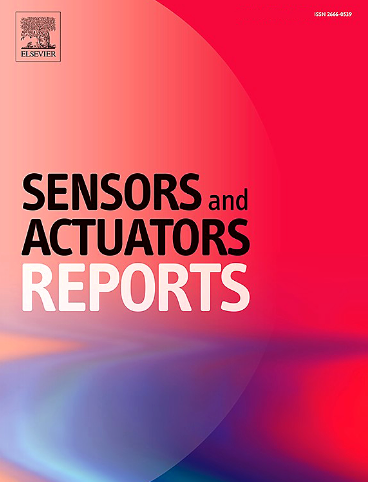Novel L-cysteine-functionalized Au@MnO2/MoO3 nanocomposites for electrochemical detection of apoptosis-related proteins in immunogenic cell death of patient-derived lung cancer cells
IF 7.6
Q1 BIOTECHNOLOGY & APPLIED MICROBIOLOGY
引用次数: 0
Abstract
This study presents the development of a label-free electrochemical immunosensor for detecting apoptosis-related proteins, calreticulin (CRT) and high-mobility group box 1 (HMGB1), in the context of immunogenic cell death (ICD). The immunosensor utilizes a novel L-Cys/Au@MnO2/MoO3 nanocomposite-modified screen-printed carbon electrode (SPCE) to investigate the electrochemical detection of HMGB1, a topic with limited prior research. The successful assembly of the immunosensor was confirmed through XRD, SEM, and XPS analyses. The strong biomolecular adsorption capability of Au nanoparticles, combined with the superior charge transfer properties of MnO2 and MoO3, enhances the electrochemical performance of the immunosensor. The immunosensor achieved low detection limits (LOD) of 0.5391 pg/mL for CRT and 0.849 pg/mL for HMGB1, along with broad dynamic linear ranges of 0.001 to 10 ng/mL and 0.001 to 1000 ng/mL, respectively, highlighting the excellent selectivity, reproducibility, and stability of this novel immunosensor. With higher drug concentrations and extended treatment durations, increased levels of ICD biomarkers were observed, underscoring the potential of the immunosensor for monitoring drug efficacy and its applicability in personalized medicine.
新型l -半胱氨酸功能化Au@MnO2/MoO3纳米复合材料用于电化学检测患者源性肺癌细胞免疫原性死亡中凋亡相关蛋白
本研究提出了一种无标记的电化学免疫传感器,用于在免疫原性细胞死亡(ICD)的背景下检测凋亡相关蛋白,钙网蛋白(CRT)和高迁移率组盒1 (HMGB1)。该免疫传感器利用一种新型的L-Cys/Au@MnO2/MoO3纳米复合材料修饰的丝网印刷碳电极(SPCE)来研究HMGB1的电化学检测,这是一个先前研究有限的课题。通过XRD, SEM和XPS分析证实了免疫传感器的成功组装。Au纳米颗粒具有强大的生物分子吸附能力,结合MnO2和MoO3优越的电荷转移特性,增强了免疫传感器的电化学性能。该免疫传感器对CRT和HMGB1的检出限分别为0.5391 pg/mL和0.849 pg/mL,动态线性范围分别为0.001 ~ 10 ng/mL和0.001 ~ 1000 ng/mL,具有良好的选择性、重复性和稳定性。随着药物浓度的提高和治疗时间的延长,观察到ICD生物标志物水平的增加,强调了免疫传感器监测药物疗效及其在个性化医疗中的适用性的潜力。
本文章由计算机程序翻译,如有差异,请以英文原文为准。
求助全文
约1分钟内获得全文
求助全文
来源期刊

Sensors and Actuators Reports
Multiple-
CiteScore
9.60
自引率
0.00%
发文量
60
审稿时长
49 days
期刊介绍:
Sensors and Actuators Reports is a peer-reviewed open access journal launched out from the Sensors and Actuators journal family. Sensors and Actuators Reports is dedicated to publishing new and original works in the field of all type of sensors and actuators, including bio-, chemical-, physical-, and nano- sensors and actuators, which demonstrates significant progress beyond the current state of the art. The journal regularly publishes original research papers, reviews, and short communications.
For research papers and short communications, the journal aims to publish the new and original work supported by experimental results and as such purely theoretical works are not accepted.
 求助内容:
求助内容: 应助结果提醒方式:
应助结果提醒方式:


